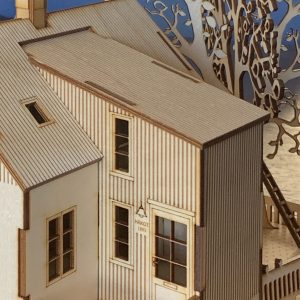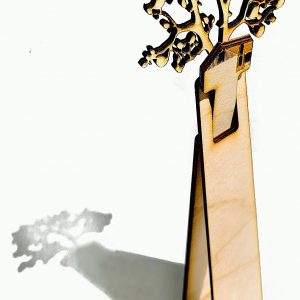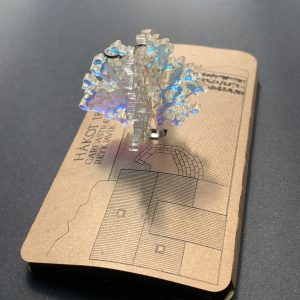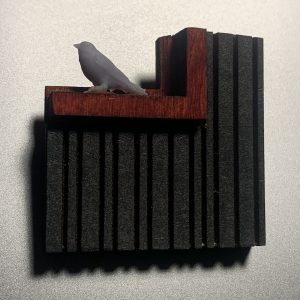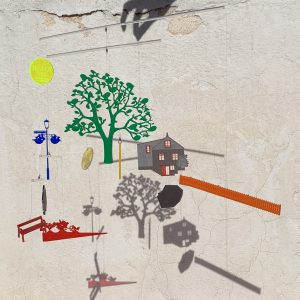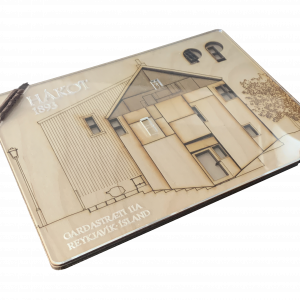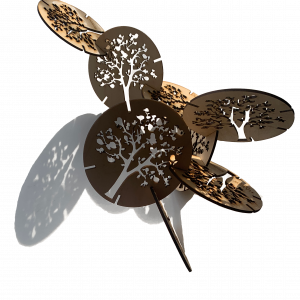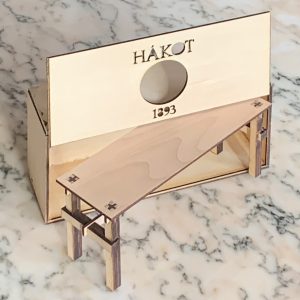Your basket is currently empty!
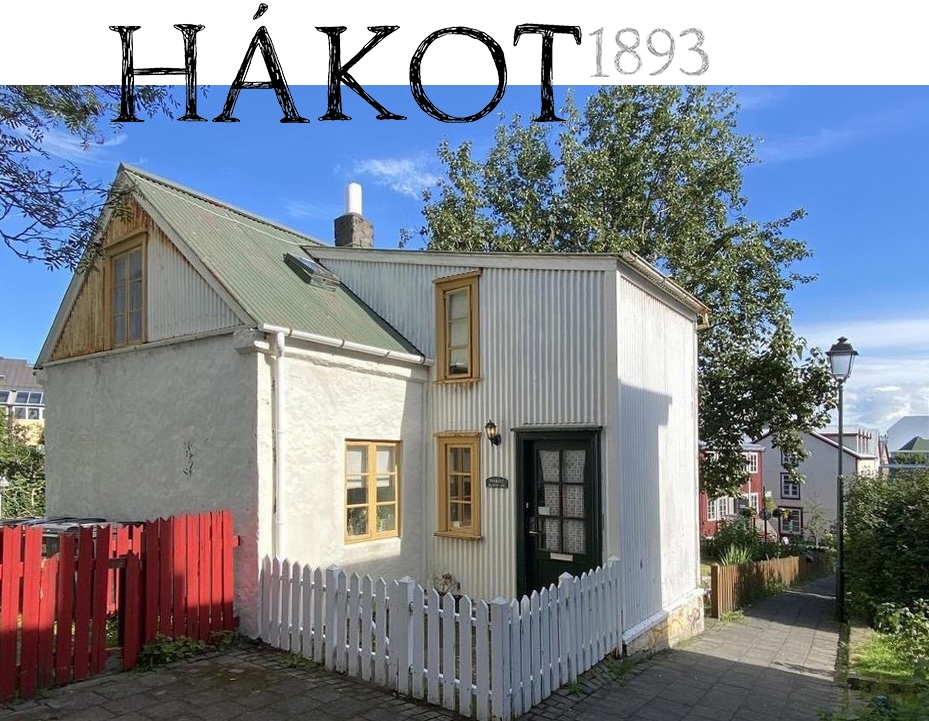
History
Grjótaþorp in Reykjavík, ICELAND
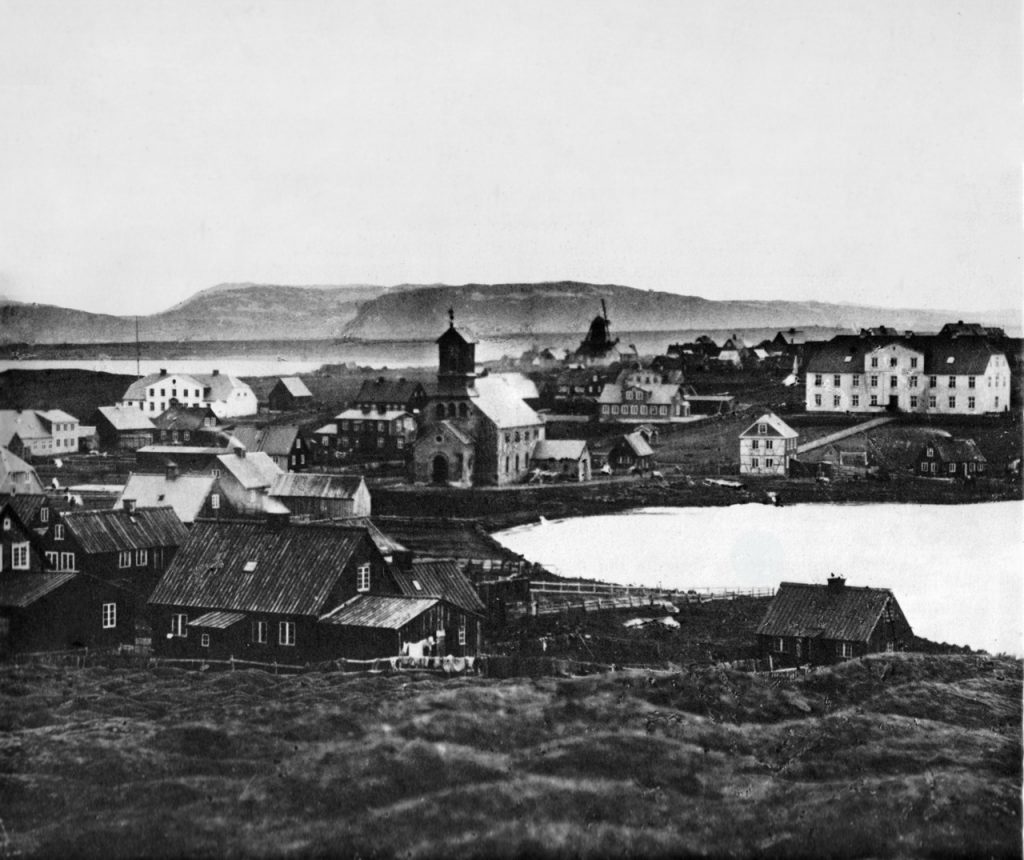
Grjótaþorp (Stone village) is considered the best-preserved area from the time Reykjavík was developing into a village.
From the 1930s to the 1970s, there were plans for radical changes to the planning in Grjótaþorp. The intention was to remove the current settlement and replace it with wider streets and larger houses. Newer concrete houses took this into account, for example the house at Garðastræti 17. In the new planning it was meant to stand on a corner.
Grjótaþorp is named after a farm called Grjóti. To the north of the farm was Grjótatún (Stone field). When the Cathedral was built in 1787, the stone for the building was torn up from the fields and thus no longer used for farm animals. Instead, vegetable gardens were built.
Grjótaþorp is located in the vicinity to where Skúli fógeti initiated commercial installations and industry in Reykjavík. From there, emerged urban development in Reykjavík. Grjótaþorp has therefore been part of the village named after Ingólfur Arnarson’s first settlement, founder of Reykjavík. From the mid-18th century, land plots were allocated to small detached houses for families without a land or cattle, so-called tómthús. HÁKOT is one of those.
Stone houses in Reykjavík
A turning point in the construction of stone houses occurred when the House of Parliament was built in the years 1880−1881. Icelanders learned the craft of cutting stone from Danish craftsmen. In the years 1880−1900, a new type of houses was created, Stone houses, and soon became common in Reykjavík. These were mainly tómthús, small houses built of stone houses for people who worked on sea and for the town hall.
Before, they lived in turf houses. The structure of the turf house was adapted to new conditions which makes the typology unique to Reykjavík. A house with two walls built in stone, cut dolerite (a coarse-grained basalt rock). Another variation of these small houses was built with cut dolerite for all the walls. With this unique housing, the industrial worker was pulled into modernity with better and more permanent housing than had been known up to that time. A total of about 200 houses were built of dolerite in Reykjavík between 1860 and 1910.
HÁKOT is among 18 stone-built houses that remain in Reykjavík. The only one in Grjótaþorp.
The house
HÁKOT is a dolerite stone-built house, one of its kind in Grjótaþorp, from 1893. In 1999, Minister of Education declared it part of Iceland Protected Heritage.
In 1893, Guðmundur Ásmundsson built the house on the site of HÁKOT in Grjótaþorp. It was built of dolerite with an iron roof. The arrangement consisted of two wooden panelled rooms on the ground floor, as well as a kitchen and pantry, and two panelled rooms in the attic. A basement was under half of the house.
Jón Þórðarson is listed as the first resident of the house. Jón was a leader of the tómthús-men in Reykjavík and was a town councillor. He resigned from the town council in 1870 to protest against the imposition of a tax on all catches brought ashore. The carpenter Högni Hansson bought half of the house in 1906 and made a staircase- addition to the house on the south side, along with other changes in 1922. The next family lived in HÁKOT from 1938 to 1941. Census records indicate that more than one family usually lived in the house, sometimes as many as 8 to 12 people at a time.
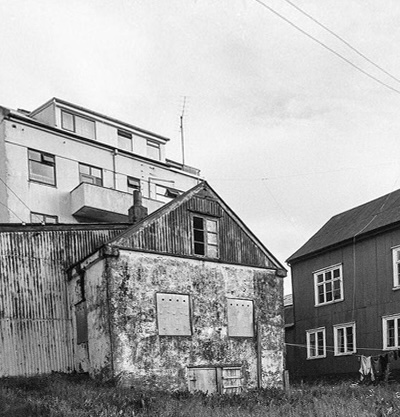
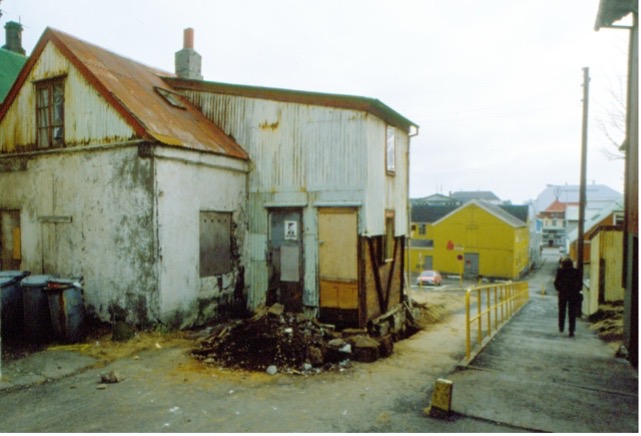
No one lived in the house from 1941 and until Ragnheiður Þorláksdóttir bought it in 1980. It was then in a dilapidated condition. Upon purchase, the house was thoroughly renovated under the direction of architect Hjörleifur Stefánsson. Ragnheiður gave the house a new lease of life. She sold the house in 2017.
Current owners from 2020 have carried out considerable restoration, both in the interior and the exterior. In 2021, a bedroom was added on the ground floor, interior painted and floors treated, a garden shed (Lágkot) was obtained from Akureyri, built by the artist Örn Ingi. The Lágkot was transported on a truck and carefully placed at the bottom of the garden without moving earth. That same summer, work began on lowering the basement floor so that one could stand upright in that room, Miðkot.
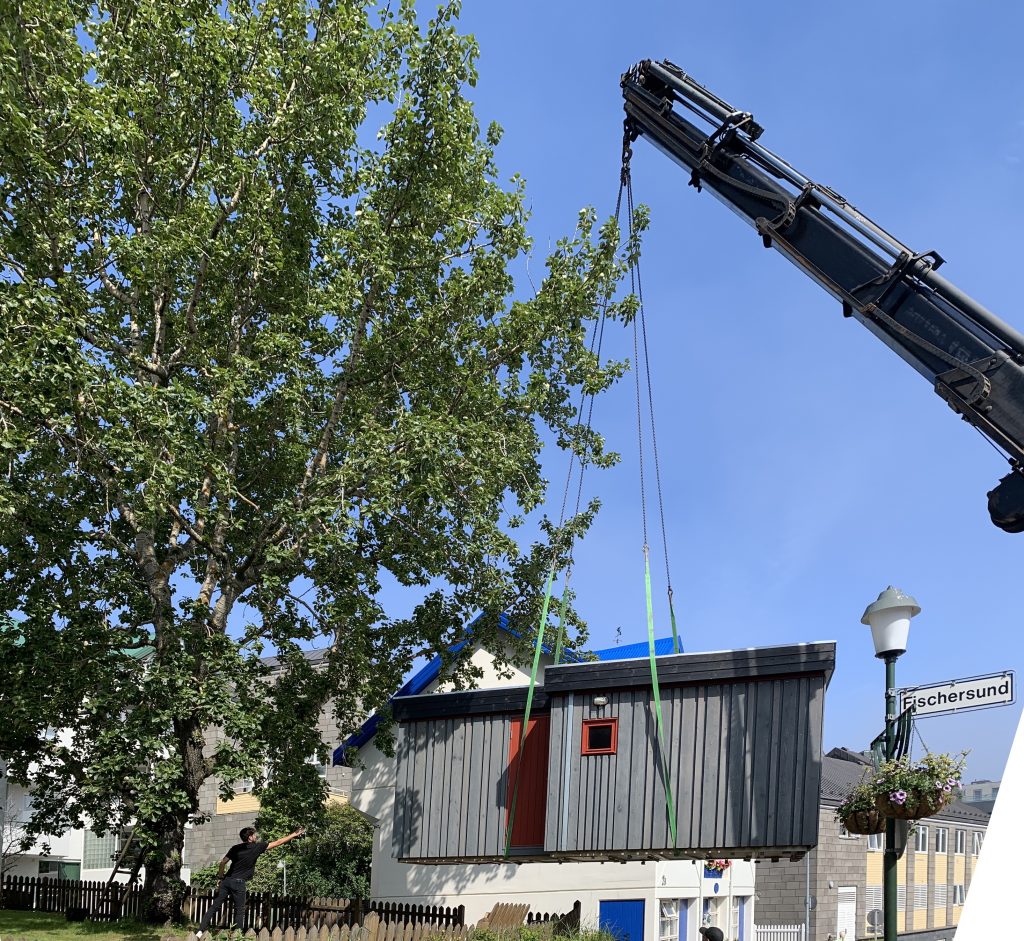
The following summer, roof and gutters were changed and chimney repaired. All in accordance with the origin of the house.
In 2023, the roof was painted and work continued in Miðkot. Outside Miðkot, the entrance was made safer. At the same time, the garden was dug up to install a drainage pipe from the house and into the Reykjavík drainage system in Fishersund. Archaeologists from the Icelandic Heritage Institute oversaw the construction due to being a historical site. In the summer of 2024, work began on renewing windows with double glass for isolation. The wrought iron cladding on the west gable was also renewed. The work on Miðkot was completed, waterproof and dry with floor heating. HÁKOT started to change colours in accordance with Gröndalshús and Lágkot to be finished during the summer 2025. Three two meters tall red beech trees were planted on the site on the north site to close the garden from the vision to the carpark.
The tree
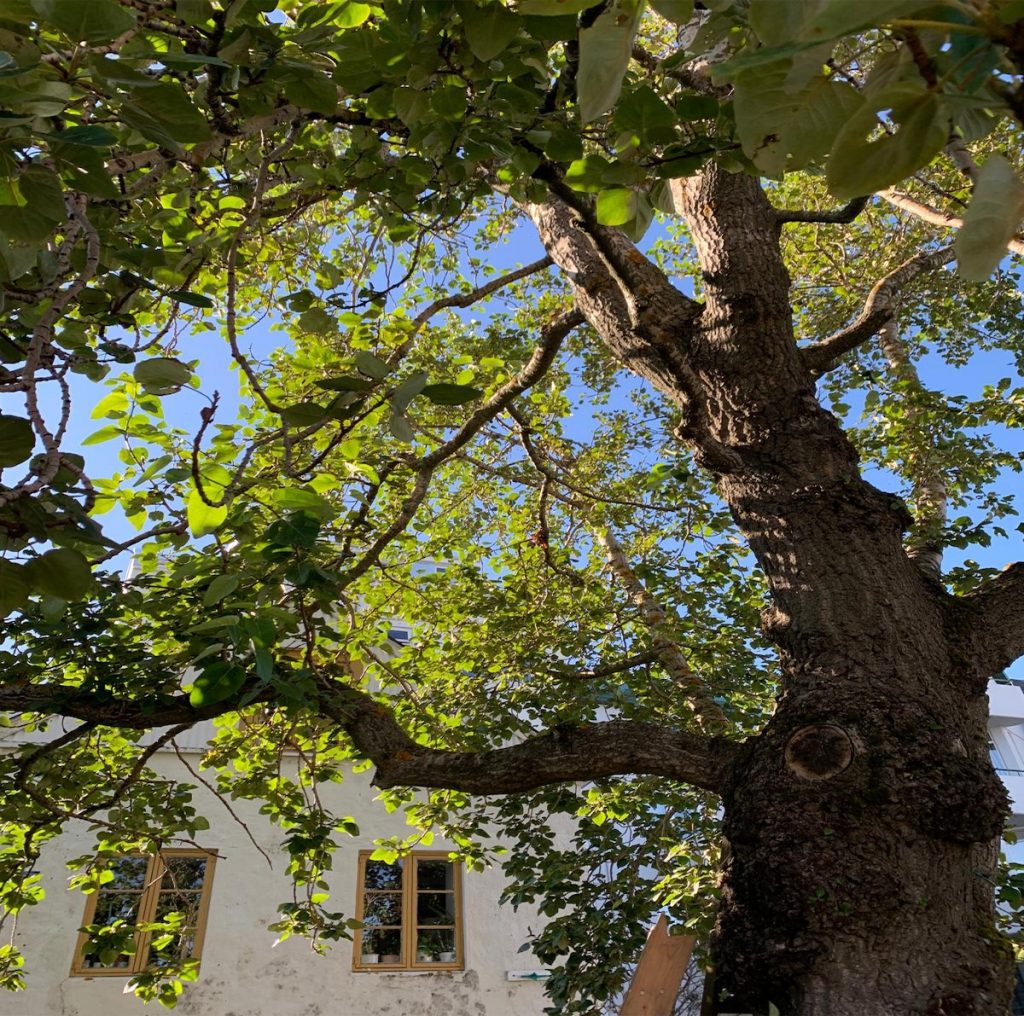
Without a doubt the most incredible element of the garden is the tree. The Black Cottonwood in Hákot’s garden was prized as the Tree of the Year 2016 by the Icelandic Forestry Association. Thirty years earlier in 1986, the tree had been saved when construction was about to begin on a neighboring site. This was thanks to Ragnheiður, the Hákot’s owner. Originally, the tree was probably planted around 1960 and was about 5 meters tall when moved to Hákot. The tree has always attracted much attention due to its unusual appearance. It is characterized by its large crown and strong branching.
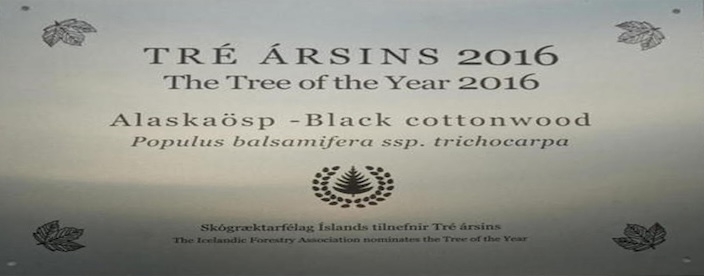
The project
As soon as we saw HÁKOT in 2020, we decided to buy it. We fell in love with it immediately, despite its sad aspect, rusty roof, the poor conditions of windows and lack of maintenance both inside and its garden.
We found out it was the oldest house built in stone in Grjótaþorp from 1893 but we also got impressed with the plaque indicating that the big tree in the garden was an award winning tree! Everything was magic about this small old house, it just needed to be taken care of.
Since then, we have not ceased working on it. An infinite job yet so rewarding! We are convinced that HÁKOT is alive, has a soul, and appreciates the long list of treatments we have done up to now.
In parallel, we began designing games and toys inspired from the house as gifts for our children and grandchildren. From there, reproductions were made for family members and close friends.
Everyone seems to love these HÁKOT keepsakes, which led us to wonder:
Is it possible for a designer to choose a humble architecture and turn it into a monument or a referent?
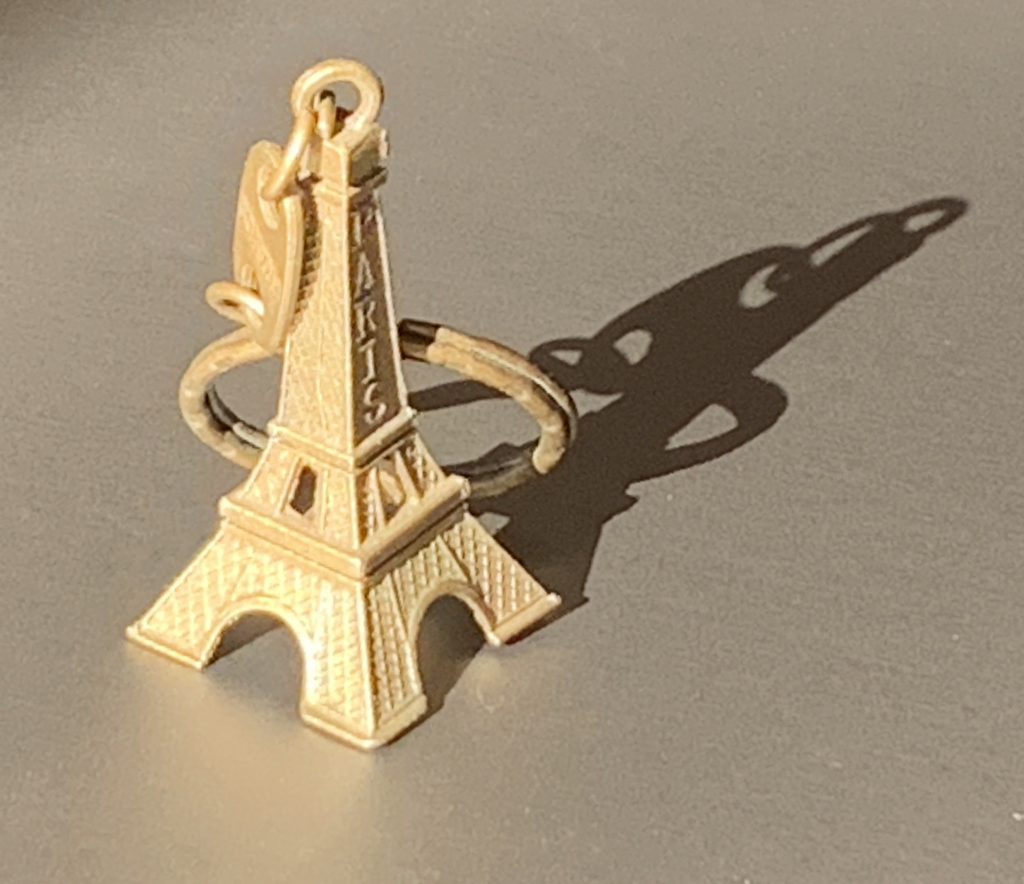
When people visit Paris, it’s quite common to buy a souvenir of the Eiffel Tower. Could we create a similar effect?
Can HÁKOT become such an architectural reference?
Can it be something that Reykjavík’s visitors seek out as a memorable keepsake?
Of course, this it is not the Eiffel Tower, but that is precisely the challenge!
To follow up the challenge, it would be an interesting design process to create cultural memories inspired by the various historical houses in Grjótaþorp.
It would be a refreshing alternative to the common puffins and Viking-themed mementos.
We want to share with all of you this project. Its economic benefit will run entirely to maintaining the Grjótaþorp historical houses, starting with HÁKOT1893.
HÁKOT1893 collection
-
HÁKOT1893 – 3D puzzle
200,00 € -
HÁKOT1893 – bread tweezer
60,00 € -
HÁKOT1893 – earrings
90,00 € -
HÁKOT1893 – brooch
70,00 € -
HÁKOT1893 – mobile
150,00 € -
HÁKOT1893 – impossible puzzle
90,00 € -
HÁKOT1893 – coasters
120,00 € -
HÁKOT1893 – koss
70,00 € -
HÁKOT1893 – rat
90,00 € -
HÁKOT1893 – bench
100,00 €
